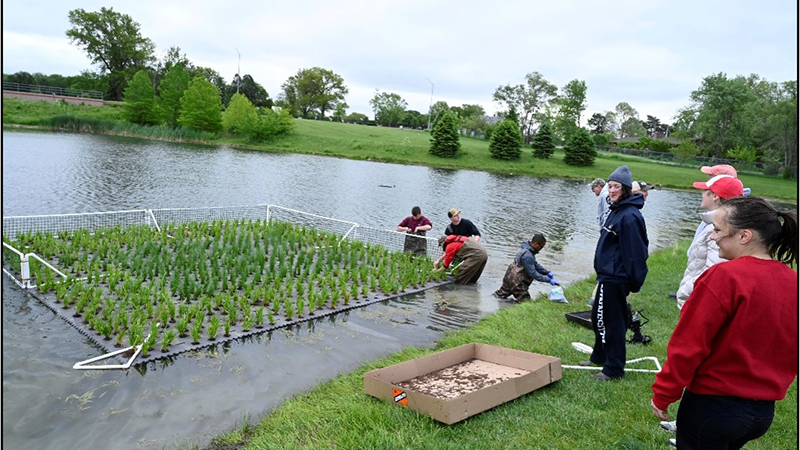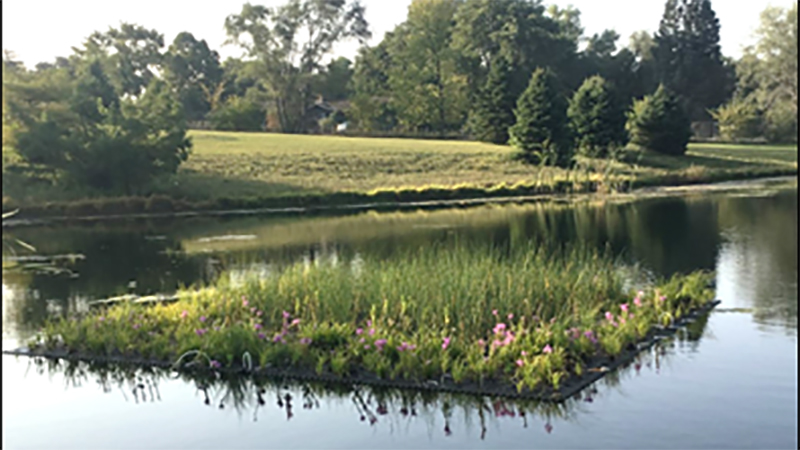
A Water Quality Improvement Project at Cooper YMCA, Lincoln NE
Collaborator(s): Steve Comfort, Aaron Mittelstet

What's Going On?
The University of Nebraska (UNL) is conducting a research project at the Cooper YMCA with the goal of developing a treatment technology that reduces algae and weed growth in urban ponds.
What is the Problem?
Eutrophication is the process by which surface water becomes progressively enriched with nutrients like nitrogen (N) and phosphorus (P). When this occurs, unwanted algae and weeds grow and fish kills can occur. Reducing nutrient runoff is the key to prevention. But, once nutrients accumulate, additional treatments may be needed before water quality improves.
What's Our Approach?
UNL is attempting a novel approach to remove N and P from the nutrient-rich water by combining a biological treatment with a chemical treatment.
Biological Approach
Floating Treatment Wetlands (FTW) are engineered ecological systems that improve water quality. Wetland plants are being employed in floating frameworks, where their exposed roots are suspended in the water. Plant uptake removes N and P from the water, while microbes on plant roots convert nitrate (NO3-) to nitrogen gas (N2), which safely returns to the atmosphere.

Chemical Approach
Lanthanum (La3+) is a rare-earth element that can be used to remove excessive phosphate (PO43-) from nutrient-rich waters. It binds to phosphates in the water, creating lanthanum phosphate, which is a form of phosphorus that is not available for plant growth. Lanthanum is being slowly released through an airlift pump, which also adds oxygen to the water.


Installation of Biological Approach on May 28, 2021
Floating Treatment Wetland Installation created by Dakota Altman / Platte Basin Timelapse on Vimeo.
Results
Phosphorus and nitrogen concentrations have decreased since 2020 and dissolved oxygen concentrations have increased. This has resulted in less algae and greater water clarity.
Changes in Water Clarity
June 10, 2021

July 14, 2021

Changes Within the First Year

Changes a Year Later


Cooper YMCA Floating Wetland Timelapse. Timelapse produced by Dakota Altman / Platte Basin Timelapse on Vimeo.
Funding
Nebraska Department of the Environment and Energy (NDEE)
Nebraska Environmental Trust (NET)
U.S. Geological Survey (USGS) 104b
Support
AirLift Environmental (Lincoln, NE) for construction of the airlift pump
Teledyne ISCO (Lincoln, NE) for instrumentation, supplies and assistance.




